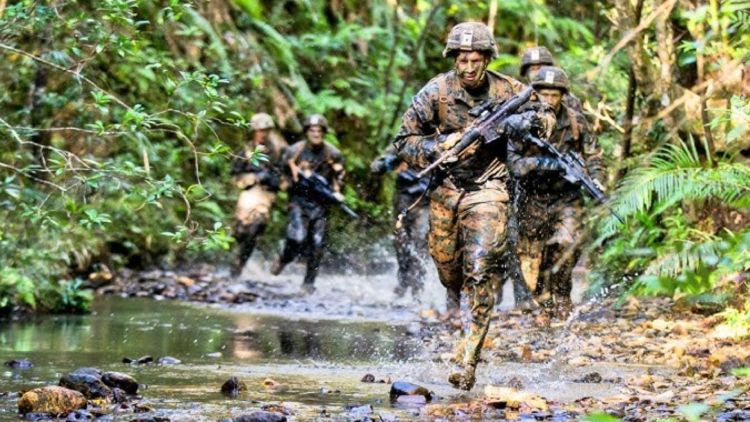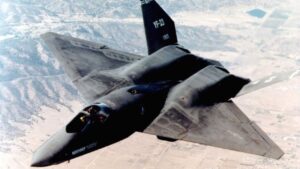The following piece first appeared on Warrior Maven, a Military Content Group member website.
Artillery, fighter jet attack, maritime amphibious assault, long-range rocket fire, and dismounted infantry assaults are all often discussed and heavily emphasized areas of warfare tactics, yet each of these is enabled by a lesser-recognized yet indispensable and impactful element of war …. Logistics.
Attacks can’t happen without ammunition; forces cannot advance without transportation supplies and food, and armored vehicles cannot “move-to-contact” and breach an enemy’s perimeter formation without fuel, yet such necessities of war can easily get overlooked. However, it might not be too much of an exaggeration to posit that, indeed, the country that better manages and supports logistics and supply chains is far more likely to prevail in war, regardless of the relative lethality and effectiveness of its weapons.
A published US Army intel analysis makes the key observation that any future “Large Scale Combat Operation (LSCO)” with either Russia or China is expected to happen in either the European or Pacific theater, areas requiring a massive, secure, and extended logistical effort. The farther away US forces need to “forward-deploy” and sustain combat operations, the more vital supply lines and logistical sustainment operations become with regard to large-scale, great-power warfare.
The recent US Army intelligence analysis looked at the Ukraine war and other recent and ongoing conflicts to better anticipate the kinds of future warfare operational environments likely to emerge in the coming decade. The US Army Training and Doctrine Command’s analysis, called “The Operational Environment 2024-2034, Large Scale Combat Operations,” published findings and analysis resulting from extensive study and research regarding current combat environments
“The increased logistics requirements of LSCO will challenge Army sustainment operations, and adversaries will target those same operations from the Homeland to the battlefield,” the text of the report says.
Europe and Asia
Large-scale combat operations in Europe and the Pacific would each present a unique set of logistical challenges, in large measure, because they are both far from the US homeland and likely to require protracted engagement in need of sustainment. Initially, each would require substantial forward deployment in the form of armored vehicles, ammunition, and food and water sustenance for fighting forces. Europe would require extensive ground logistics support such as transportation vehicles such as tactical trucks and mobile ammunition stockpiles. A European theater conflict also requires supply aircraft such as Air Force C-130s able to transport forces and critical supplies in high-risk, austere, hostile environments under enemy fire. Perhaps of greatest importance, advancing forces would need a steady, secure supply of fuel and ammunition to support any ground-advance into Russia or Eastern Europe. These are precisely the kinds of operations likely to be targeted by adversaries, according to the Army report, which based its findings on extensive analysis of the ongoing Ukraine war.
“Adversaries will seek to disrupt main supply routes at key choke points such as restricted terrain, bridges, tunnels, and railway junctions. Protecting these routes will be vital to sustaining operations. Given battlefield transparency, supply vehicles and convoys will be identified and tracked to resupply points for targeting and subsequent destruction by fires, attritting both the logistics and associated means of transportation and distribution,” the study says.
The following piece first appeared on Warrior Maven, a Military Content Group member website.
Artillery, fighter jet attack, maritime amphibious assault, long-range rocket fire, and dismounted infantry assaults are all often discussed and heavily emphasized areas of warfare tactics, yet each of these is enabled by a lesser-recognized yet indispensable and impactful element of war …. Logistics.
Attacks can’t happen without ammunition; forces cannot advance without transportation supplies and food, and armored vehicles cannot “move-to-contact” and breach an enemy’s perimeter formation without fuel, yet such necessities of war can easily get overlooked. However, it might not be too much of an exaggeration to posit that, indeed, the country that better manages and supports logistics and supply chains is far more likely to prevail in war, regardless of the relative lethality and effectiveness of its weapons.
A published US Army intel analysis makes the key observation that any future “Large Scale Combat Operation (LSCO)” with either Russia or China is expected to happen in either the European or Pacific theater, areas requiring a massive, secure, and extended logistical effort. The farther away US forces need to “forward-deploy” and sustain combat operations, the more vital supply lines and logistical sustainment operations become with regard to large-scale, great-power warfare.
The recent US Army intelligence analysis looked at the Ukraine war and other recent and ongoing conflicts to better anticipate the kinds of future warfare operational environments likely to emerge in the coming decade. The US Army Training and Doctrine Command’s analysis, called “The Operational Environment 2024-2034, Large Scale Combat Operations,” published findings and analysis resulting from extensive study and research regarding current combat environments
“The increased logistics requirements of LSCO will challenge Army sustainment operations, and adversaries will target those same operations from the Homeland to the battlefield,” the text of the report says.
Europe and Asia
Large-scale combat operations in Europe and the Pacific would each present a unique set of logistical challenges, in large measure, because they are both far from the US homeland and likely to require protracted engagement in need of sustainment. Initially, each would require substantial forward deployment in the form of armored vehicles, ammunition, and food and water sustenance for fighting forces. Europe would require extensive ground logistics support such as transportation vehicles such as tactical trucks and mobile ammunition stockpiles. A European theater conflict also requires supply aircraft such as Air Force C-130s able to transport forces and critical supplies in high-risk, austere, hostile environments under enemy fire. Perhaps of greatest importance, advancing forces would need a steady, secure supply of fuel and ammunition to support any ground-advance into Russia or Eastern Europe. These are precisely the kinds of operations likely to be targeted by adversaries, according to the Army report, which based its findings on extensive analysis of the ongoing Ukraine war.
“Adversaries will seek to disrupt main supply routes at key choke points such as restricted terrain, bridges, tunnels, and railway junctions. Protecting these routes will be vital to sustaining operations. Given battlefield transparency, supply vehicles and convoys will be identified and tracked to resupply points for targeting and subsequent destruction by fires, attritting both the logistics and associated means of transportation and distribution,” the study says.
Sure enough, Ukrainian defenses crippled the initial Russian incursion into their country through effective and precise targeting of supply lines and convoys crossing bridges or seeking to advance through narrowly configured streets and passageways. Much of these attacks relied upon groups of dispersed dismounted groups of maneuvering fighters armed with hand-held anti-armor weapons such as Javelin anti-tank missiles. These attacks took place in the form of ambushes, hit-and-run-attacks and surprise, simultaneous unanticipated strikes from numerous angles from “tough to see and target” maneuvering dismounted positions. The Army study found that these kinds of Ukrainian attacks on Russian supply routes not only destroyed tactical trucks and armored vehicles such as tanks, but also massively reduced the amount of artillery available to Russian forces during their initial attempted advance. Ukrainian strikes on Russian ammunition supplies reduced their available ammo down to one-fourth of its original size, the Army intel research discovered.
“At the height of the Russia-Ukraine war in late 2022, Russia was expending 20,000 artillery rounds a day. As Russian logistics nodes and main supply routes were actively targeted by Ukrainian fires, that daily rate of fire dropped precipitously to 5,000 rounds per day,” the study found.
Therefore, as indicated by the study, any large-scale European campaign would have little chance of success unless fuel, ammunition and soldier reinforcement efforts were not intensely and aggressively protected from Russian air and ground attacks. Even Pre-Position Stocks locations in secure areas throughout Europe would need to be protected and, despite being closer to the front on the European continent, they would still be at great risk of attack while in transit.
Protecting supplies could potentially be accomplished in several ways, as forward operating surveillance drones and even clandestine ground reconnaissance could seek to identify Russian points of attack and target them prior to any convoy advance to “clear an area” or secure corridor for supplies to travel through. Integrated air-ground attack, fortified by logistical support, would be critical to any successful European advance, a reality suggested by the Army report. These efforts would of course be much more challenging as they would need to take place on the European continent across the Atlantic from US supply depots.
Advancing armored formations transiting the European continent would need convoy protection in the form of EW systems to “jam” incoming weapons, vehicle-mounted drone defenses and long-range fires to destroy enemy launch sites from stand-off distances.
Increased US presence in Eastern Europe
This is likely why the US Army has thousands of forward deployed forces throughout Europe and Eastern Europe to include Poland, Germany and even other NATO allies further East such as Romania, Bulgaria and the Czech Republic. A Pentagon essay from Dec. 2023 specifically cited the increased US military presence in Romania and ongoing ties, as it involves F-16 training, roughly 3,000 US soldiers and MQ-9 Reaper drones. In a meeting with Romania’s Prime Minister and Minister of Defense in December 2023, US Defense Secretary Lloyd Austin told Romanian leaders “We’re also grateful to you for hosting an increased U.S. and allied presence,” he said. “That’s bolstering deterrence along NATO’s eastern flank.”
Austin also cited Romanian leadership in the Black Sea aimed at protecting Ukraine’s grain supplies.
It would not be surprising if Austin and US Operational Commanders received advice and input from the Army’s intel community regarding the importance of forward-operating support for logistics and supplies to Ukraine. This kind of strategic and tactical approach is indicative of the kinds of actions the US will need to take in potential conflicts over the next decade, as supplies would need to be as close to advancing forward troops as possible.
Pacific Logistics
The geographical “expanse” of the Pacific, however, would be much more likely to require coordinated air-sea integration through the use of forward-positioned fuel, airborne tankers and surface supply ships such as oilers, supply vessels and ship-launched supply and transport aircraft such as Osprey aircraft. Maritime maneuver formations in the Pacific would also of course need drone and missile defenses to protect supply transport operations, one reason US Navy carriers, destroyers and cruisers increasingly rely upon unmanned surface vehicles for forward threat identification operations and layered ship-defenses such as Vertical Launch System-fired SM-2s,3s and 6s, deck-mounted guns and closer in defenses and interceptors such as CWIS and Sea-RAM, among others. The largest US Navy advantage for the US in any Pacific engagement would likely be the ship-launched variants of the Joint Strike Fighter to include the amphib-launched F-35B and carrier-launched F-35C as they could combine forward reconnaissance with long-range sensor and even attack enemy launch positions to protect ocean-traveling US Navy supply lines.



